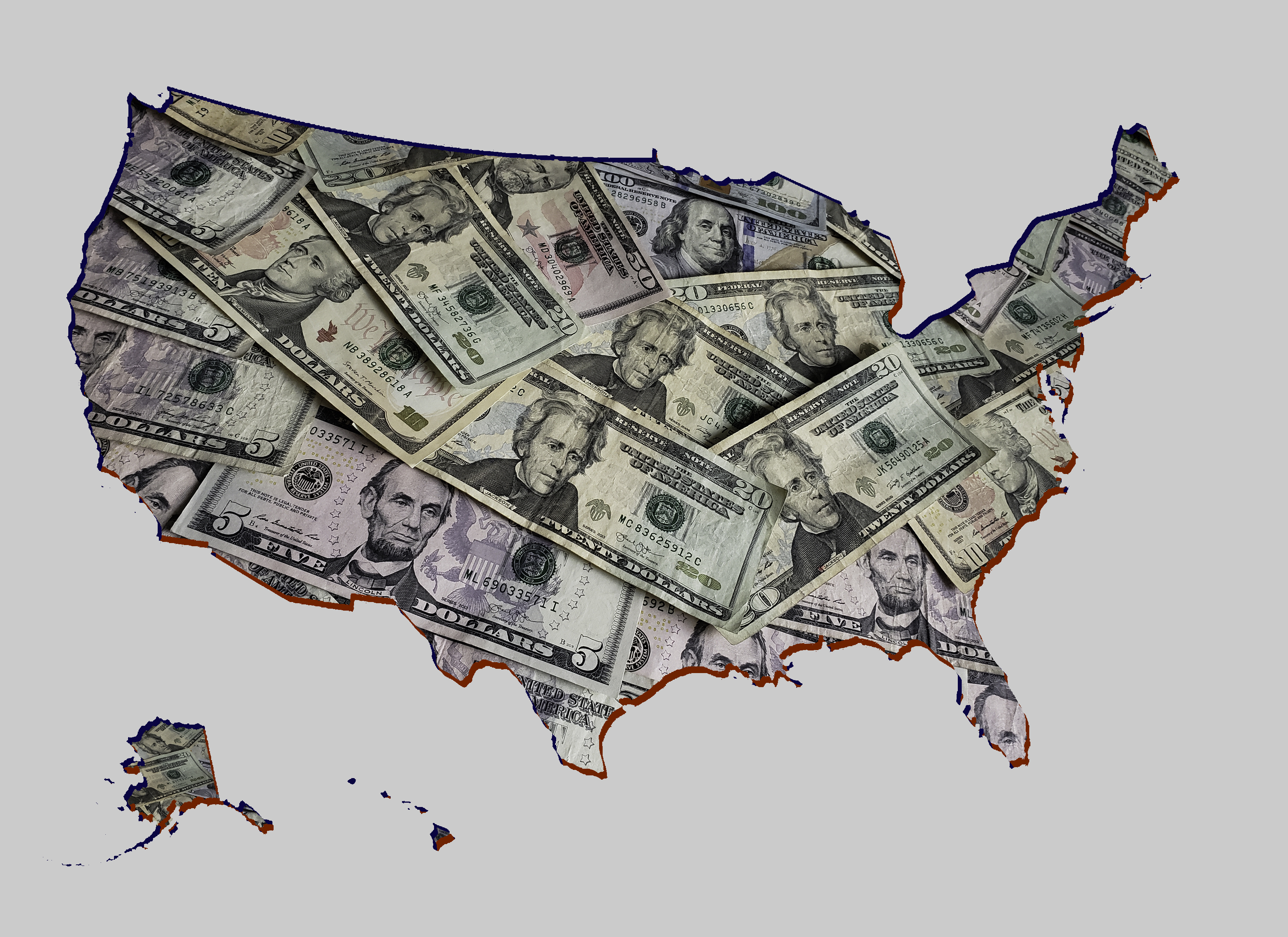3 Money ‘Musts’ for Every One of Us, Inspired by Financial Literacy Month
Now more than ever, those preparing for retirement need to understand their finances and the impact their decisions have on their financial future. Here are three money rules we all should be living by. Are you?


Most Americans believe they are financially literate, but surveys show few actually are. Increasing debt and a lack of retirement savings show there’s a need for financial education. April marks Financial Literacy Month, a time to remind ourselves of healthy financial habits.
No matter your age, a solid financial plan will help you navigate different stages of life. It can help you budget to buy a house, start a family and save for your children’s college education. As you put together your financial plan, consider these three important steps.
1. Manage Your Debt with the Avalanche or Snowball Method
Household debt is at an all-time high, with Americans owing nearly $15 trillion. From credit card debt to student loans and mortgages, every generation is impacted. Americans over the age of 50 hold 22% of all student loan debt — up from only 10% in 2004. Especially during times of economic uncertainty, managing your debt should be a top priority. We advise our clients who are preparing for retirement to wipe out their debt, starting with any high-interest debt, such as credit card debt. Retirees live on a fixed income, and any debt payments have to be factored into their budget.
From just $107.88 $24.99 for Kiplinger Personal Finance
Become a smarter, better informed investor. Subscribe from just $107.88 $24.99, plus get up to 4 Special Issues

Sign up for Kiplinger’s Free Newsletters
Profit and prosper with the best of expert advice on investing, taxes, retirement, personal finance and more - straight to your e-mail.
Profit and prosper with the best of expert advice - straight to your e-mail.
When tackling your debt, there are two popular methods: The avalanche method encourages you to organize your debts by interest rate. You’ll start by tackling the debt with the highest interest rate first. Once that debt is paid off, you’ll move to the next highest interest rate. The snowball method encourages you to organize your debts by the amount you owe. You’ll pay off the debt with the smallest balance first, before moving on to your next smallest balance. With each method, continue making at least the minimum payments on your other debts as you work to pay it all off.
2. Get Serious about an Emergency Fund: Here’s How
If you don’t understand what an emergency fund is or why you need one, now is the time to get serious about starting one. No matter your age or financial situation, an emergency fund is crucial to your financial security. This is money set aside in an easily accessible account, like a money market or savings account, that can be used at any time to pay for the unexpected, such as missing a paycheck, getting laid off or an emergency medical bill. Your emergency fund should have enough cash to cover six months of expenses. Without this safety net, many people are forced to turn to credit cards or even their retirement accounts to help make ends meet. Here’s why those are bad options: Credit cards have an average interest rate of nearly 17%, which means you could be paying off that bill for months. And withdrawing from your retirement account before age 59 ½ can trigger a 10% early withdrawal penalty and put your future retirement at risk.
Emergency funds are important for retirees, too. Health care is one of the biggest expenses retirees face. An unexpected medical bill from a fall or serious diagnosis has to be paid on way or another. If you haven’t factored this into your budget, you could run the risk of running out of money by withdrawing too much from your retirement funds sooner than planned.
If your emergency fund falls short or is nonexistent, start by looking at your budget and finding areas to cut. Put $50-100 aside each week. It may seem easiest to put the money into a savings account you already have open, but instead, open a separate account dedicated solely to your emergency fund. That way it has a purpose and is used only in case of emergency.
3. Set a 15% Goal When Saving for Retirement
From 401(k)s to IRAs and other investment accounts, there are a lot of options when it comes to saving for the future; there are tax-deferred accounts, tax-free accounts and taxable accounts. It’s important to understand how each works and how they can benefit your long-term retirement plan.
Saving in tax-deferred accounts, like a traditional IRA or 401(k), allows you to lower your taxable income now by contributing money pre-tax. That money will then be taxed as you withdraw it in retirement. Money you put into tax-free accounts, like a Roth IRA or Roth 401(k), is taxed now but you do not pay taxes on your withdrawals in retirement; your money also grows tax-free. Taxable accounts include your brokerage and savings accounts. You are taxed on the interest you earn, as well as on any dividends or gains.
If you aren’t sure where to begin, start with your employer-sponsored 401(k); be sure you’re contributing enough to get your full employer match. After doing that, consider opening a Roth IRA to help diversify your tax liability in retirement. Taxable investment accounts are also important. Talk with a financial adviser before investing; you want to be sure your portfolio aligns with your risk tolerance. No matter which combination of accounts you choose, at least 15% of every paycheck should be dedicated to your retirement savings.
These three steps are key to your long-term financial security. If you haven’t already, meet with a financial adviser to put a plan in place. A financial plan will help you navigate different stages of life. While it can help you budget for big expenses like buying a home, it will also outline savings goals to meet as you plan and prepare for retirement.
Profit and prosper with the best of Kiplinger's advice on investing, taxes, retirement, personal finance and much more. Delivered daily. Enter your email in the box and click Sign Me Up.

Tony Drake is a CERTIFIED FINANCIAL PLANNER™ and the founder and CEO of Drake & Associates in Waukesha, Wis. Tony is an Investment Adviser Representative and has helped clients prepare for retirement for more than a decade. He hosts The Retirement Ready Radio Show on WTMJ Radio each week and is featured regularly on TV stations in Milwaukee. Tony is passionate about building strong relationships with his clients so he can help them build a strong plan for their retirement.
-
 Visa Stamps the Dow's 398-Point Slide: Stock Market Today
Visa Stamps the Dow's 398-Point Slide: Stock Market TodayIt's as clear as ever that President Donald Trump and his administration can't (or won't) keep their hands off financial markets.
-
 State Tax Changes 2026: Is Your State Cutting Taxes This Year?
State Tax Changes 2026: Is Your State Cutting Taxes This Year?Tax Changes As a new year begins, taxpayers across the country are navigating a new round of state tax changes.
-
 Who Said That? Match the US President to the Quotation
Who Said That? Match the US President to the QuotationWho better to give advice on aging, retirement and finances than a U.S. president? Our short quiz will determine whether you're a history buff or buffoon.
-
 The Paradox Between Money and Wealth: How Do You Find the Balance?
The Paradox Between Money and Wealth: How Do You Find the Balance?Wealth reflects a life organized around relationships, health, contribution and time — qualities that compound differently than money in a mutual fund.
-
 Billed 12 Hours for a Few Seconds of Work: How AI Is Helping Law Firms Overcharge Clients
Billed 12 Hours for a Few Seconds of Work: How AI Is Helping Law Firms Overcharge ClientsThe ability of AI to reduce the time required for certain legal tasks is exposing the legal profession's reliance on the billable hour.
-
 General Partner Stakes: Why Investors Are Buying Into the Business of Private Equity
General Partner Stakes: Why Investors Are Buying Into the Business of Private EquityGP stakes in asset management firms offer exposure to private markets and are no longer just for the wealthy. Find out why it looks like a good year to invest.
-
 5 Golden Rules We (Re)learned in 2025 About Investing
5 Golden Rules We (Re)learned in 2025 About InvestingSome investing rules are timeless, and 2025 provided plenty of evidence demonstrating why they're useful. Here's a reminder of what we (re)learned.
-
 I'm a Financial Adviser: Here's How to Earn a Fistful of Interest on Your Cash in 2026 (Just Watch Out for the Taxes)
I'm a Financial Adviser: Here's How to Earn a Fistful of Interest on Your Cash in 2026 (Just Watch Out for the Taxes)Is your cash earning very little interest? With rates dropping below 4%, now is the time to lock in your cash strategy. Just watch out for the tax implications.
-
 How Oil and Gas Investing Can Stabilize Returns and Shield Against Market Volatility: Tips From a Financial Pro
How Oil and Gas Investing Can Stabilize Returns and Shield Against Market Volatility: Tips From a Financial ProDirect exposure to oil and natural gas projects can strengthen a portfolio's long-term resilience with non-market-correlated cash flow and an inflation hedge.
-
 How to Navigate the Silence After Your Business Sells for $5 Million: Tips From a Financial Planner
How to Navigate the Silence After Your Business Sells for $5 Million: Tips From a Financial PlannerThe silence after a big sale can be disorienting. It's essential to redefine your identity and focus on your purpose before rushing into the next big thing.
-
 Turning 59½: 5 Planning Moves Most Pre-Retirees Overlook
Turning 59½: 5 Planning Moves Most Pre-Retirees OverlookAge 59½ isn't just when you can access your retirement savings tax-free. It also signals the start of retirement planning opportunities you shouldn't miss.